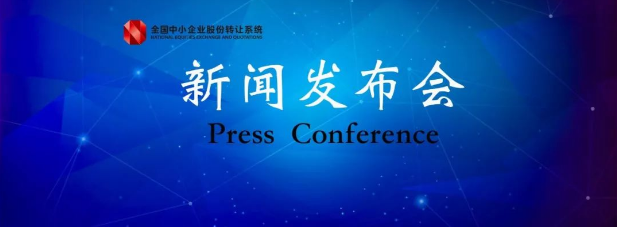
The National Equities Exchange and Quotations Company optimizes the system of stock issuance and mergers and acquisitions and establishes an evaluation mechanism for market makers
2021-09-15

On October 26, 2018, the National Equities Exchange and Quotations Company issued and implemented the newly formulated "Regulations on Matters Concerning the Issuance of Stocks by Listed Companies", "National Small and Medium Enterprise Share Transfer System Stock Issuance Business Guidelines No. 1-4" and the newly revised "National Equities Exchange and Quotations". Guidelines for the Stock Issuance Business of the SME Share Transfer System, issued and implemented the Guidelines for the Major Asset Restructuring Business of Unlisted Public Companies in the National Equities Exchange and Quotations System, "Q&A on the Major Asset Restructuring Business of Listed Companies", and "Q&A on Changes in Equity and Acquisition of Listed Companies", At the same time, the "Measures for the Evaluation of Market Makers in the National Equity Transfer System for Small and Medium-sized Enterprises (Trial)" was released to optimize and reform existing systems such as the directional issuance system, merger and reorganization system, and market maker system in the New Third Board market.
Since 2013, the NEEQ market has gradually established a “small, fast, flexible and diversified” issuance financing system and a market-oriented M&A and reorganization system. The financing scale of listed companies and the scale of M&A and reorganization have continued to expand. It is difficult and expensive to raise funds, and positive results have been achieved in improving the direct financing system, promoting the integration of industrial structures, and optimizing resource allocation. Since its launch, the market-making transfer system has played an active role in promoting price discovery and enhancing market liquidity. As of October 25, 2018, there were 10,908 companies listed on the New Third Board; in the past six years, 6,107 listed companies have completed 9,811 stock issuances, with a total financing amount of 459.365 billion yuan; 348 listed companies have completed 367 major asset restructurings involving The total amount reached 63.001 billion yuan, and 808 listed companies completed 877 acquisitions, with a total amount of 129.462 billion yuan. However, with the development of the new third board market, the current stock issuance system, merger and reorganization system, and market maker system can no longer fully adapt to the new situation, new changes and new problems in the market.
This system reform and optimization is that under the leadership of the China Securities Regulatory Commission, NEEQ has implemented the spirit of the 19th National Congress of the Communist Party of China and the relevant deployment of the National Financial Work Conference, deepened the reform of "delegating power, delegating power, regulating services", and making good use of the New Third Board to serve small and medium-sized enterprises. , an important measure for the role of private enterprise owners; it is an important part of the overall deployment of deepening the reform of the New Third Board, focusing on the reform and optimization of the existing stock system, focusing on improving the market financing function, improving market efficiency, and on stock issuance, mergers and acquisitions. The city business system has been reformed and optimized as a whole, and the overall planning and coordination of subsequent incremental reforms have also been comprehensively considered.
In terms of the stock issuance system of listed companies, the first is to implement a parallel review mechanism, adjusting the external issuance procedures such as signing a tripartite regulatory agreement, verifying capital by an accounting firm, and issuing opinions from the sponsoring brokerage and lawyers to parallel operation. From the information disclosure link such as the issuance plan, the review content of the issuance of the filing registration letter is simplified to the issuance data verification and comparison, and the idle time of the raised funds is shortened. It is estimated that the average idle time of the funds raised by listed companies can be shortened by more than 20 days. The second is to launch the authorized issuance system, which stipulates the authorized issuance system of "one decision at the annual general meeting of shareholders and implementation by the board of directors in stages" to improve the decision-making efficiency of small-amount issuance. After the launch of the authorized issuance system, the internal decision-making time of listed companies for microfinance can be shortened by more than 15 days. It is also estimated that about 20% of the financing needs of listed companies can be achieved through authorized issuance. The third is to adhere to the negative list management, optimize the regulatory requirements for raised funds, and no longer require the necessity and rationality of the use of raised funds for issuances that are not directly funded, and no longer require the use of raised funds to supplement working capital. Quantitative calculations are required. The fourth is to clarify the requirements for related parties to abstain from voting, and to stipulate the implementation of the voting rights abstention system under different circumstances to prevent regulatory arbitrage. The fifth is to clearly terminate the filing review and related risk prevention and control mechanisms, and implement rules and regulations.
In terms of the M&A and restructuring system of listed companies, first, improve the identification criteria for major asset restructuring, clarify the specific form of "asset transactions through other means", etc., and at the same time make it clear that the listed company's purchase of land and houses for production and operation will no longer be carried out in accordance with major asset restructuring. management, in order to further reduce the burden of information disclosure of listed companies, reduce transaction costs, and improve transaction efficiency. The second is to optimize the suspension and resumption system for major asset restructuring, and to make detailed provisions on the review procedures and information disclosure content for applications for extension and resumption of transfer. After the implementation of the new rules, it can effectively shorten the suspension time of listed companies due to restructuring matters, avoid the phenomenon of "long-term suspension" and "long-term suspension", and protect investors' trading rights. The third is to adjust the review process arrangement, exempting insiders of listed companies without historical transaction records from reporting inside information, and further improving the review efficiency. The fourth is to clarify the relevant regulatory requirements and penalties for raising supporting funds, improve the company's ability to pay during restructuring, reduce the pressure on corporate restructuring, and improve the rules and regulations for taking self-regulatory measures against corporate restructuring violations. Fifth, the disclosure requirements involving changes in equity and acquisitions have been adjusted, and the operation method has been clarified in a targeted manner regarding the changes in equity involved in the "remaining shares" transaction, which is generally concerned by all parties in the market, and the information disclosure obligation when the largest shareholder changes. Special explanations have been made to fill some system gaps, reduce disclosure costs for all parties in the market, and avoid unintentional violations. In addition to the above adjustments, the relevant legal application opinions issued by the China Securities Regulatory Commission clarified that the number of issuers to issue shares to purchase assets in major asset restructuring is no longer limited to 35 people, and asset holders who do not meet the conditions for public stock transfer are allowed to invest in restricted funds. Participate in the subscription as a person.
As for the evaluation mechanism of market makers, firstly, on the basis of the existing quality evaluation of sponsoring securities companies, establish a separate evaluation system for market makers. The second is to focus on the market-making behavior of market makers based on the characteristics of the NEEQ market-making system, and conduct a multi-dimensional evaluation of the market-making behavior from the three aspects of market-making scale, liquidity provision and quotation quality. The third is to pay attention to the application of the evaluation results of market makers. According to the evaluation results, appropriate reductions and exemptions of transaction fees are given to outstanding market makers, so as to guide market makers to actively and compliantly make markets. It is estimated that after the market maker evaluation is officially launched, the transfer handling fee of market makers in the whole market will be reduced by an average of 55%.
In the next step, NEEQ will, under the leadership of the China Securities Regulatory Commission, firmly grasp the inherent requirements of unswervingly implementing the basic socialist economic system, adhering to the "two unswerving", and firmly grasping the service of small, medium and micro enterprises, private enterprises and private enterprises. The work orientation of enterprises and risk prevention, in accordance with the general idea of "taking market stratification as the starting point, and coordinating the promotion of reforms in issuance, trading, information disclosure, supervision and other aspects", earnestly implement various reform arrangements, and continuously track and evaluate system reforms The optimized situation will accumulate experience and create conditions for the introduction of subsequent deepening reform measures.




